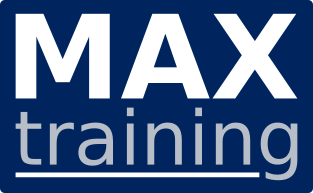Cisco Unified Communications Manager and Unity Connection 11.x for Administrators
Code: CUCMA11This 4 day instructor led training course provides system administrators and networking professionals with an understanding of the Cisco Unified Communications Manager System, Unity Connection Voicemail and the IM and Presence Server for Cisco Jabber. This course teaches the concepts of IP telephony based in system administration, including its function, features, and configuration. This is an entry-level course that begins with the basic concepts of IP telephony and very quickly moves you forward into an understanding of system concepts: clustering, creation of phones and users, route plans, digit manipulation, media resources, and phone features, which are all important when supporting IP telephony in the enterprise network.
The course focuses on Cisco Unified Communications Manager version 11.x. The course is geared to individuals that will be using and managing the system and performing administration for Level 1 and Level 2 support.
This training course is also suitable for attendees who are using Cisco Unified Communications Manager versions, 8, 9, and 10. This course includes many lab exercises, which aim to reinforce and apply the content covered following the lesson.
Please note this course does not cover issues of initial deployment, new cluster deployment or international deployments, or issues with the underlying network that involve routers, switches, or Cisco IOS software configuration. Delegates working towards certification should attend the courses recommended for CCNA Collaboration and CCNP Collaboration
Objectives
Upon completing this course, you will be able to meet these overall objectives:
- Describe the role of Cisco Unified Communications Manager and its associated Applications in the Collaboration Workspace
- Provide an overview of administrator and end-user interface options in Cisco Unified Communications Manager, Cisco Unity Connection, and Cisco Unified Communications Manager IM and Presence Service.
- Describe user configuration and the User Self-Care Portal
- Explain the Route plan and Calling Privileges
- Implement Endpoints by, Manual add, Auto-registration, Self-Provisioning IVR and the use of the BAT Tool
- Describe the various Media Resources, including MOH, Traditional Meet-me, Ad-hoc Conferencing and Conference Now
- Administer users in Cisco Unity Connection and Cisco Unified Communications Manager IM and Presence Service, and enable the most commonly used and New features for both applications
- Describe how to maintain a Cisco Unified Communications solution
Who should attend
The primary audiences for this course are:
- Phone network administrators
- Data system administrators
- Entry-level network engineers
The secondary audience includes:
- Learners looking to gain a technical overview of Cisco Unified Communications Manager
Prerequisites
The knowledge and skills that a learner must have before attending this course are:
- Basic knowledge of IP and networking or voice networks is suggested, but not required
- Basic knowledge of the Windows desktop environment
Course Modules
Cisco Unified Communications Manager Introduction
- Describing the role of Cisco Unified Communications Manager, its architecture and its deployment and redundancy options
- Describing the role of Cisco Unity Connection and Cisco Unified Communications Manager IM and Presence Service
- Understanding Administrator Interfaces
- Performing Initial Cisco Unified Communications Manager Configuration
- Understanding the Self-Care portal
Endpoint and End-User Administration
- Understanding End-User Characteristics and Configuration Requirements
- Understanding End-User Implementation Options
- Understanding Endpoint Characteristics and Configuration Requirements
- Understanding Endpoint Implementation Options
- Configure a Cisco Spark Remote Device
Dial Plan Introduction and Implementation
- Call Routing Overview
- Understanding and Configuration of Dial Plan Components
- Implementing Endpoint Addressing and Call Routing
- Implementing Calling Privileges
- Implementing Call Coverage in Cisco Unified Communications Manager
End User Telephony and Mobility Features
- Understanding Telephony Features
- Enabling Telephony Features
- Deploying IP Phone Services
- Understanding Mobility Features
- Enabling Mobility Features
Media Resources
- Describing Media Resources in Cisco Unified Communications Manager
- Implementing Annunciators, MTP’s and MOH
- Implementing Traditional Meet-me and Ad-hoc Conferencing
- Implementing Conference Now
Cisco Unity Connection
- Understanding Cisco Unity Connection
- Understanding End User and Voice Mailbox Characteristics and Configuration
- Understanding End User and Voice Mailbox Implementation Options
- Implementing Unified Communications Manager and Unity Connection PIN synch
- Implementing Voice Message Summary Notification via Email
- Implementing `Missed Call Notification via Email
Cisco Unified Communications Manager IM and Presence Service
- Understanding Cisco Unified Communications Manager IM and Presence Service
- Enabling Cisco Jabber Client in Deskphone and Softphone Mode
- Enabling Enterprise Groups
Cisco Unified Communications Backup and Restore
- Understanding the Disaster Recovery System
Labs
- Lab 1: Administrator Interfaces, Licencing and Post Installation Tasks
- Lab 2: Exploring the Self-Care Portal
- Lab 3: Calling Privileges and Dial Plan Implementation
- Lab 4: Self-Provisioning Setup Elements, LDAP integration and Importing End Users
- Lab 5: Deploying Endpoints using Auto-registration, the Self-Provisioning IVR and the Bulk Administration Tool (BAT)
- Lab 6: Enable Telephony Features
- Lab 7: Hunt Groups and Native Call Queuing
- Lab 8: Configure Extension Mobility
- Lab 9: Enable Mobile Connect (SNR)
- Lab 10: Enable the Annunciator, MOH, Ad-hoc and Meet-me Conferencing
- Lab 11: Enable Conference Now
- Lab 12: Integrate Cisco Unified Communications Manager with Unity Connection
- Lab 13: Implement End Users and Voice Mailboxes
- Lab 14: Implementing Unified Communications Manager and Unity Connection PIN synch
- Lab 15: Implementing Voice Message Summary Notification and Missed Call Notification via Email
- Lab 16: Enable Cisco Unified Communications Manager IM and Presence Service and Jabber
- Lab 17: (Optional) Back Up Cisco Unified Communications Manager
Price (ex. VAT)
Duration
Delivery methods
- Classroom
- On-site (at your location)
- Virtual (instructor online)
